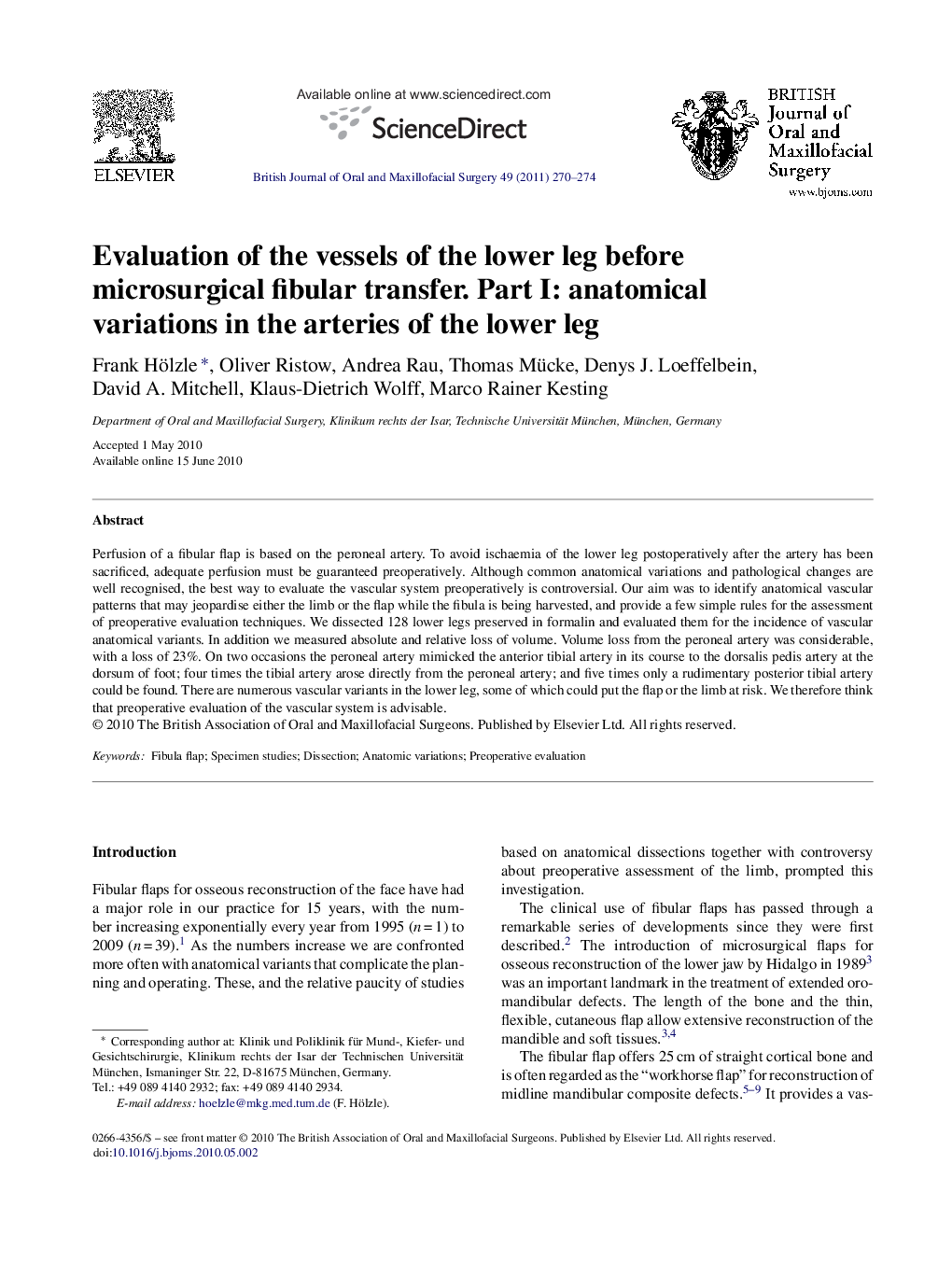| Article ID | Journal | Published Year | Pages | File Type |
|---|---|---|---|---|
| 3124260 | British Journal of Oral and Maxillofacial Surgery | 2011 | 5 Pages |
Perfusion of a fibular flap is based on the peroneal artery. To avoid ischaemia of the lower leg postoperatively after the artery has been sacrificed, adequate perfusion must be guaranteed preoperatively. Although common anatomical variations and pathological changes are well recognised, the best way to evaluate the vascular system preoperatively is controversial. Our aim was to identify anatomical vascular patterns that may jeopardise either the limb or the flap while the fibula is being harvested, and provide a few simple rules for the assessment of preoperative evaluation techniques. We dissected 128 lower legs preserved in formalin and evaluated them for the incidence of vascular anatomical variants. In addition we measured absolute and relative loss of volume. Volume loss from the peroneal artery was considerable, with a loss of 23%. On two occasions the peroneal artery mimicked the anterior tibial artery in its course to the dorsalis pedis artery at the dorsum of foot; four times the tibial artery arose directly from the peroneal artery; and five times only a rudimentary posterior tibial artery could be found. There are numerous vascular variants in the lower leg, some of which could put the flap or the limb at risk. We therefore think that preoperative evaluation of the vascular system is advisable.
